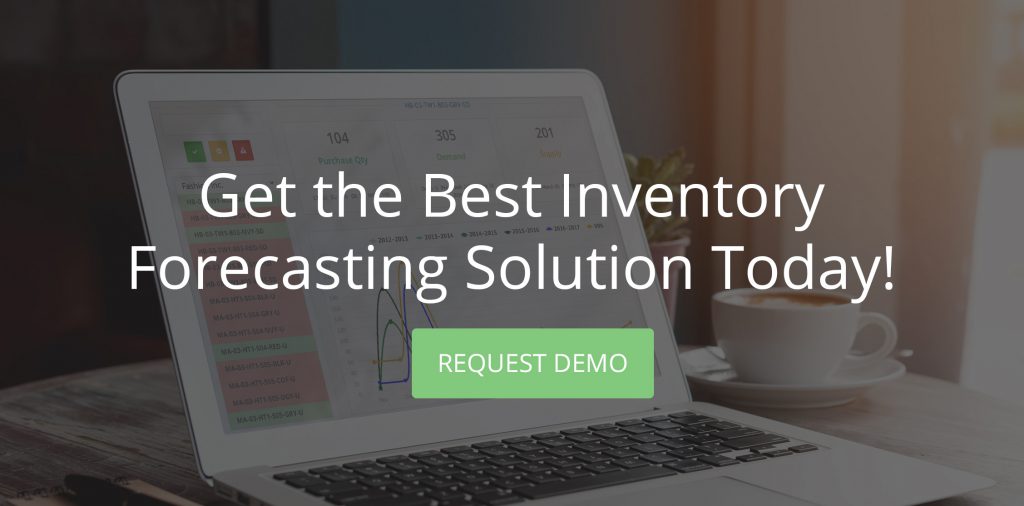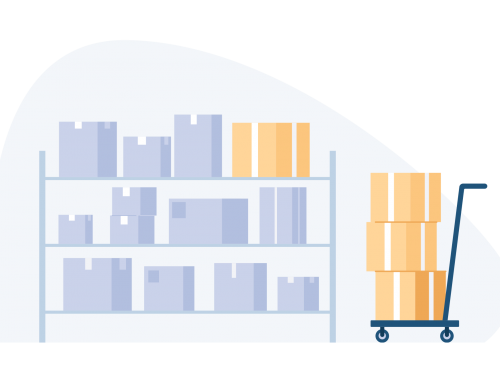Being out of stock means lost sales.
You also can’t have too much cash frozen in illiquid inventory—it paralyzes other aspects of your business. This is the balancing act e-commerce and retail employees responsible for ordering are tasked with every day; they are working feverishly to maintain a “Goldilocks Quantity” of product for each SKU. We will examine a few inventory forecasting and ordering methods and evaluate strengths and weaknesses in the processes.
First up is perhaps one of the most basic, yet largely relied upon, inventory management methods: Min/Max quantities and reorder points.
Reorder Points and Mins/Maxes: What do these terms mean, and what processes does this method entail?
Inventory Minimum Values (Mins): These are minimum threshold quantities assigned for each product, so when on-hand inventory dips below them, a notification to reorder is triggered.
Inventory Maximum Values (Maxes): These are the maximum on-hand quantities you wish to have when shipments of new products come in. These are the levels you want your in-stock quantities to reset to after an order.
Reorder Points: Similar to Mins, reorder points are thresholds, which trigger an order when in-stock quantities drop beneath them. The term “reorder point,” though, often carries with it the assumption of incorporated lead-times and order intervals; it is the inventory level at which you should reorder, because if demand continues at its current rate, you will run out of stock right as the replenishing shipment of inventory arrives.
Method
Most employers of this type of system use a semi-scientific or mix of qualitative and quantitative factors to set Min and Max points. Typically, the minima are set by intuition at first, then adjusted to reflect reality as more sales and order data are recorded. An ideal Min is one that doesn’t let you stock-out before your next shipment arrives, and an ideal Max is one that corresponds with your optimized Economic Order Quantity (EOQ): the order quantity that minimizes total inventory costs while maximizing order fulfillment (subject of a future post, but a general formula is easily found with a Google search). Once these quantities are determined, you simply assign them to their corresponding products, and place a purchase order when inventory drops below the minimum threshold for that SKU.
Strengths
Very reliable with short lead-times: This method is very viable if you have short lead times. If you order from a wholesaler or distributor and can get product from their warehouse to yours in a matter of a few days, this method of ordering is very capable.
Cheap to implement: There are often no additional costs associated with this method; you could do it with something as simple as an Excel spreadsheet.
Easy to implement: If you want to, you can avoid heavy quantitative analysis, and create and manage a min/max system with intuition and observation. You don’t need to be a math or economics major to set and adjust reasonable reorder points.
Weaknesses
If your lead times are long and varying: If this is the case for your business, determining reorder points can be challenging. Your Mins have to be high enough to mitigate the risk of a stock-out before your next shipment arrives, but also not too high that they tie up capital or force you to incur long term storage fees.
You have seasonal items: If you have items that sell exceptionally well during a particular time of year, a Min/Max reorder point strategy for these products will require additional management in the time leading up to those busy periods. This is simply due to the fact that you will want to keep your Mins low for the majority of the year to save money on inventory, but simultaneously be prepared for anticipated demand spikes.
Can be time consuming: If you have many different products with varying reorder parameters, determining and maintaining accurate reorder points can take a great deal of time.
Conclusion
A Min/Max solution is very useful when done well. If you choose to utilize this method, our best advice would be to stay organized. Many of our friends in the e-commerce world have used this system in the past, realized that this system can be more trouble than it’s worth, and then made the switch to a full-fledged demand forecasting package to better manage their inventory and ordering. That being said, many businesses successfully employ and manage a Min/Max reorder point system.
Have you outgrown a Min/Max system?
Move into a demand forecasting solution to manage your ordering, get a demo today!





